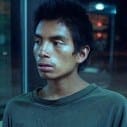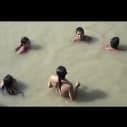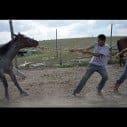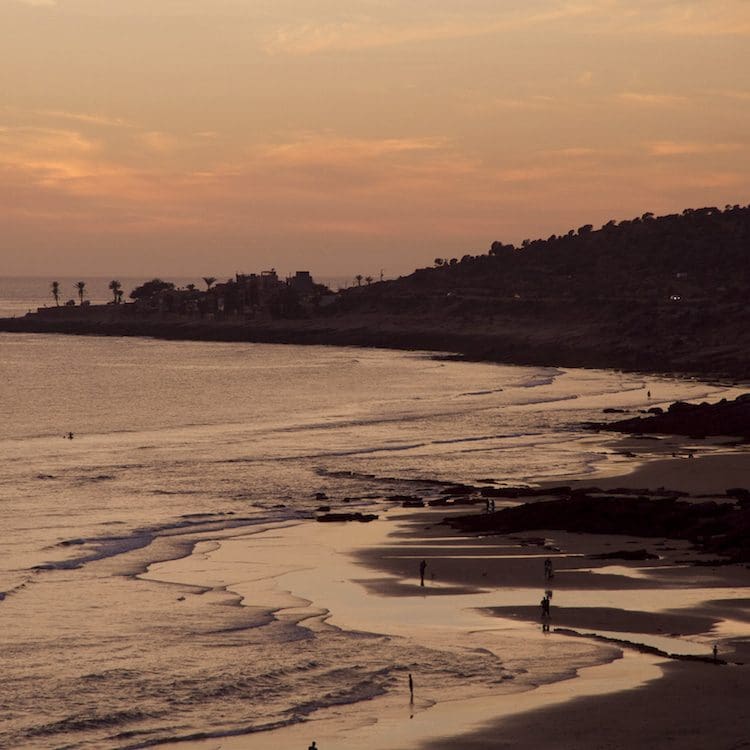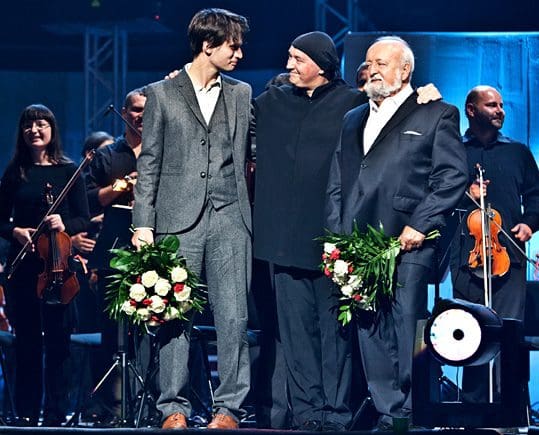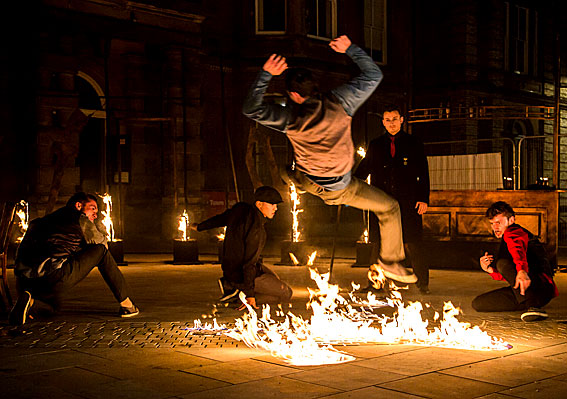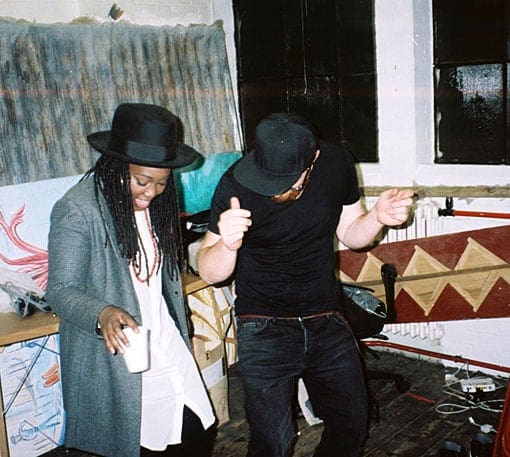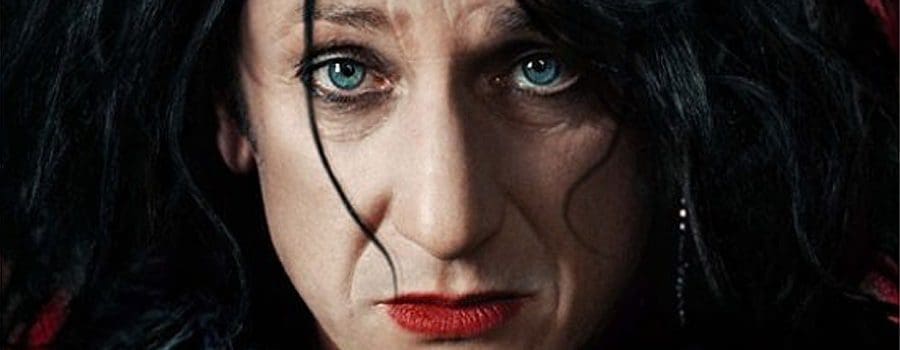Following on from the DocHouse preview screening of Who is Dayani Cristal? Anna Eborn continues the thematic journey of opening up the world and meditating on human struggles with an exploration of life on South Dakota’s Pine Ridge Indian Reservation.
For Eborn there was an urgency to tell this story, and as we watch the stories of individuals move across the screen in one overarching narrative, it creates a sense of intrigue as to how the life experiences across the Reservations compare and contrast?
By allowing her interviewees to speak openly and honestly Eborn captures the emphasis of dreams versus a lack of dreams; of crime and poverty offset by the desire to of the individual or individuals to have a positive impact on one’s community. If life is structured around opposites then Eborn captures a snapshot of the scope of the interaction of people within their society, but also the scope of human nature. It is with these contrasts that she paints an intimate and honest portrait of life in a land that still tarnishes American idealism.
During the course of our conversation Eborn shared with us her thoughts on her personal connection to the documentary form, the experience of directing her debut feature documentary, whilst also calling into question the place of the short film in modern cinema. She also discussed creating Pine Ridge’s form, the motivations and decisions that informed her creative choices, and offered her thoughts on the flawed human perspective and the reception from both the American and international audience.
Why a career as a documentarian filmmaker? Was there that one inspirational moment?
“I am a visual thinker, and the people and the places I encounter inspire me to work cinematically, which suits my personality. I enjoy the freedom of being independent, and I like the direct approach – the straight forwardness of the documentary form. I don’t like to hide too much under a dramatic arch. But I would prefer to say that I make films, and not documentaries, because the term documentary film maker is a little too closed off for me. It feels as though there are boundaries strapped around it, which in my eyes are not actually there.
It was whilst shooting a scene in the Ukraine for the short film Baba. I was insistent that a scene unfold a certain way, when all of a sudden I could see my earlier thoughts about the outcome of the scene collide and melt into the real characters of the present. I captured the moment, and I had my scene that was partly controlled by me, but was still true to the subjects and their surroundings. From then on these were the kinds of moments I wanted to capture.”
Of all the stories you could tell, why the story of the Pine Ridge Reservation and why now?
“After I visited Pine Ridge for the very first time I promised myself I would go back and shoot a film. There were never any doubts about the importance of the film being made, and for all the films being made in the United States I had hardly seen a film either about or with Native Americans/First Nations. There was no doubt in my trust for the urgency of this piece, and so there was no reason to wait.”
Following on from your 2009 documentary short Baba, how did the experience of directing your first documentary feature compare with your expectations?
“From the beginning I trusted the people I encountered, and I trusted the material we shot and the crew I was working with. The only obstacle was the funding of the film, but my producer was strong, and together we pushed the film through. When nobody wanted to support our festival distribution, we sent the film to Venice on our own.
I never have high expectations. I work in the now and I enjoyed being in the moment of making Pine Ridge. After travelling around the festivals this year, I realized just how much I enjoy being with the audience, where every cinema screening is a great reward.”
I often talk to filmmakers about the place of the short film in modern cinema. What are your thoughts on the place of the documentary short?
“It’s hard to find any real forum to screen art house films today. The alternative cinemas are closing, and in Sweden it’s crazy because one company has bought all of them – the 35 screenings are so rare – it’s terrible. Some of my shorts have been screened at museums, art galleries or small festivals, and it is hard to give them a big audience. Maybe that’s not the purpose of the short film? Maybe we need the longer duration to relax our minds in order to take in the film. The best length for me is 75 min or more. A short film is more of a handshake with the director who is behind the film.”
You use the camera and the screen to create a theatre for the individual voices of your characters, and avoid using a voiceover from an external source that would be intrusive. How did the construction of the film take shape? Was it always determined that it would take this form or did you find the form during the shoot and edit?
“I made the decision on the multi-character script after the first research trip. The place demanded it, and I felt it was the right way to go. It was clear from the beginning that I wanted to listen to many voices. I was inspired by Martin Bell and Mary Ellen Mark’s 1982 film Streetwise. I liked the way they had done their voice-overs, and I had tried out a similar method in the Ukraine for Baba. So I just kept developing whatever method it was that I was starting to use.
In Pine Ridge, we never see the same character again once a passage is over, but I wanted the characters to mirror each one another’s stories. My experience of Pine Ridge was that everything was connected, and people were always on their way somewhere – at least mentally. It was sometimes hard to follow all these different people who were on different courses, but always with similar circumstances.
I felt history embedded itself within the context of the whole reservation area, and I tried to sketch out scenes where the history could be ingrained in a scene – not as the major focus but as a detail. My cinematographer and I never worked from a script whilst shooting, but rather we would move forward with intuition and with only a list of scenes that I either wanted to shoot or to have collected by that point – either from a voice or from an image. The present was always at stake, and I wanted to stay in it. I felt I could portray the now, but not the whole historical background. I edited it myself, and the producer and I would watch the whole thing through many times to find the right crossings and the right order.”
For the majority life on the Pine Ridge Reservation is a distant place, but cinema can allow us to cross space by acting as window onto other places and cultures. What Pine Ridge symbolises is the contrast between our life journey and cinematic journey. Whilst travelling to Pine Ridge or South Dakota may not be in the future of our life journey, our cinematic journey can afford us opportunities to learn about these places and individuals we would otherwise never encounter.
“Well I agree, and this is often the reason why people say they like watching documentary – they want to learn something new. For me, the different culture is not so fascinating, and I think it is more important to see that we are similar, and that our emotions are the same. Personally, I am also triggered by seeing things with my own eyes; to work with the world around me, and to deepen my own understanding.”
In relation to the previous point, how much responsibility is placed on the shoulders of the documentarian to discover and ensure that a true depiction of other cultures and spaces is transmitted?
“I don’t measure responsibility, because for me it is about being aware, critical and respectful. I never think that I can portray a person with the whole spectre of a complete human being – all I can do is work with the emotions on screen. These are emotions that I and the audience have, and we should dare to look at ourselves.”
You conclude the film with the feeling of a departure that captures a sense of characters wandering through life. It never feels as though you are asking a question, but rather you are focused on what can be learnt through the observation of individuals, and the expression of their thoughts.
“We all kind of wander through life, and if we are aware then we learn on the way. I thought there were so many presumptions about people, and I believe it’s important to have the time to take it all in and to reflect. Life for me is filled with thoughts on death and trivial things, but somehow they are equally important. Emotions are the same. The feeling of being lost is the same for everyone. I never ask a thousand questions when doing interviews, because the core questions will arise if I am attentive.”
The story of the Native Americans is an important ongoing chapter in the human story, and the Reservations represent oppression at the heart of American history, which one might argue mars American idealism. Is this an outdated point of view for you or one that still holds true or is it inevitably a more complicated discussion?
“It’s very simple, because people, at least in the same country should have the same rights. This is not the case in America. Old presumptions should not be a reason for not daring to change. The discussion should be about the present, and children who grow up in reservations should be treated as brand new and important people with a future.”
I recall one reviewer from South Dakota commenting on how little he knew of the Pine Ridge Reservation. How do you perceive the awareness of the Reservations in the international community compared to the U.S?
“I remember that journalist. I felt people in the neighbouring state of Nebraska were afraid of even driving through Pine Ridge. The first man I met at the border control in the New York asked me, “Where you goin? Rapid City?! What you gonna do there? It’s a dangerous place.”
But the screenings in the US have been good, and whilst people tend to be a little provoked by it, I think it has more to do with them personally than with what I show in the film. It’s a case of either you know everything, and have been on a reservation or you know nothing and you act according to that lack of information or awareness.
Canada was great because Canadians know their history, and they relax when watching the film. They seem to see the details and ask more questions about cinema, poetry, image etc. In Europe, except for the narrative ad access etc, I get more questions such as, “Is it really called a reservation?!””
From before to after, how did the experience of making Pine Ridge shape or influence your personal perspective of the Pine Ridge Reservation?
“My personal perspective keeps growing, and I feel lucky to have met the people in my film, as well as everyone else who I interviewed and filmed or even just those who I talked to on Pine Ridge.”
Interview with Anna Eborn on the Pine Ridge Documentary by Paul Risker.
A preview of Pine Ridge will be screened as part of DocHouse’s July programme on Thursday 31 July, at The Institute of Contemporary Arts, with an exclusive post film Q&A with director Anna Eborn via SKYPE.
Click here for more details.


